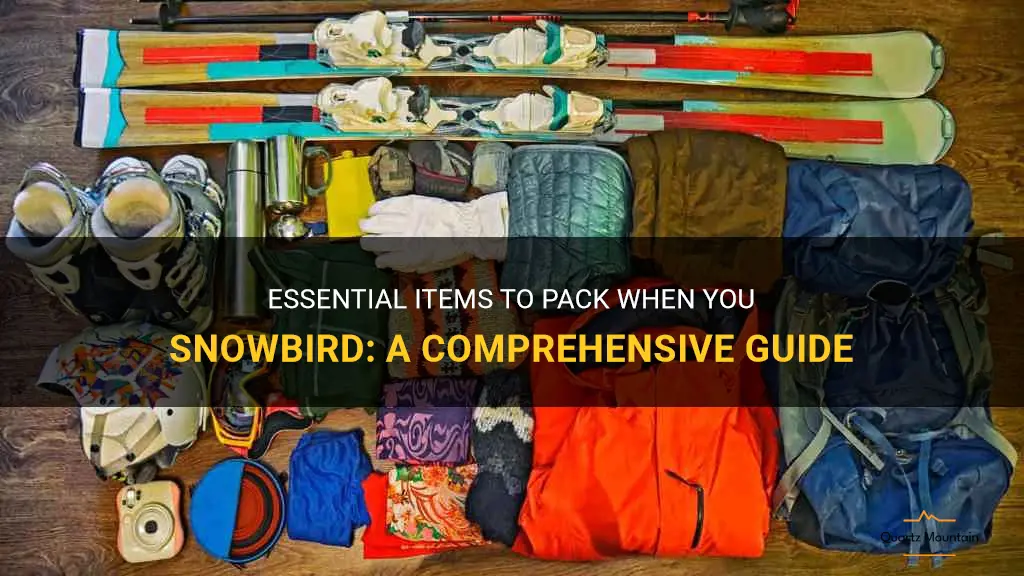Snowbird vacations represent a significant lifestyle choice for many, offering a chance to escape harsh winters and embrace warmer climates. This pursuit of extended seasonal escapes involves careful planning and consideration of various factors, from budget and accommodation to healthcare and social integration. Understanding the nuances of snowbird life is crucial for those seeking a fulfilling and enjoyable experience. This guide explores the many aspects of planning and enjoying a snowbird vacation.
From choosing the perfect destination among the myriad options across North America to navigating the logistics of transportation and housing, this exploration delves into the realities of snowbird living. We’ll examine the financial considerations, health implications, and social opportunities associated with this increasingly popular trend, offering insights to help you make informed decisions and maximize your enjoyment.
Defining “Snowbird Vacations”
Snowbird vacations represent a significant segment of the travel industry, characterized by a specific demographic and lifestyle. These trips are more than just a short holiday; they represent a seasonal relocation, often lasting several months, driven by a desire for warmer climates and a change of pace.
Snowbird vacations are typically undertaken by retirees or those with flexible work arrangements, allowing them the time to spend extended periods away from their primary residence. The duration of these vacations is highly variable, ranging from a few weeks to the entire winter season, depending on individual circumstances and preferences. Location preferences are heavily influenced by climate, with destinations in the southern United States, Mexico, and other warmer regions being highly popular. The demographic is largely comprised of older adults, but increasingly includes younger individuals who are able to work remotely.
Snowbird Vacation Motivations
The primary motivation for snowbird vacations is the escape from harsh winter weather. Individuals from colder climates seek respite from snow, ice, and freezing temperatures. Beyond climate, the desire for a change of scenery and a slower pace of life plays a crucial role. Many snowbirds appreciate the opportunity to engage in outdoor activities not readily available in their home regions during the winter months. Furthermore, the social aspect of snowbird communities, with opportunities to connect with like-minded individuals, is a significant draw. The financial aspects, such as lower cost of living in certain destinations during the off-season, also contribute to the appeal.
Typical Snowbird Activities and Lifestyle
Snowbird lifestyles are diverse, reflecting the varied interests and preferences of the individuals involved. However, several common activities and lifestyle elements characterize the snowbird experience. Many snowbirds enjoy outdoor recreational activities such as golfing, hiking, biking, and swimming. Others participate in social activities, joining clubs, attending community events, or engaging in volunteer work. A relaxed and informal lifestyle is common, with a focus on leisure and personal pursuits. Many snowbirds also engage in arts and crafts, reading, and other hobbies, enjoying the time and space to pursue personal interests. The lifestyle often involves a combination of structured activities and relaxed downtime, allowing for a balance of engagement and rest.
Activities and Entertainment
Snowbirds, those who spend their winters in warmer climates, enjoy a vibrant and diverse range of activities designed to fill their days with purpose, pleasure, and social connection. The options are as varied as the individuals themselves, catering to a wide spectrum of interests and energy levels. From leisurely pursuits to more active adventures, the possibilities are extensive.
Popular Snowbird Activities
The activities enjoyed by snowbirds are incredibly diverse, reflecting the varied backgrounds and interests of this demographic. Many snowbirds prioritize relaxation and socializing, while others maintain active lifestyles, engaging in physical activities and exploring new interests. The following list provides a glimpse into the popular choices.
- Outdoor Recreation: Golfing, hiking, biking, bird watching, fishing.
- Social Events: Potlucks, community gatherings, club meetings (e.g., book clubs, card clubs), volunteer work.
- Cultural Experiences: Attending concerts, visiting museums and art galleries, exploring historical sites, taking cooking classes.
- Wellness and Fitness: Participating in yoga classes, attending water aerobics, using fitness center facilities.
- Travel and Exploration: Day trips to nearby towns and attractions, longer excursions to more distant destinations.
- Arts and Crafts: Joining painting classes, pottery workshops, or other creative endeavors.
- Learning and Education: Taking university courses, attending lectures and workshops, participating in lifelong learning programs.
- Volunteerism: Contributing time to local charities and community organizations.
- Relaxation and Leisure: Reading, swimming, sunbathing, enjoying the amenities of their chosen community.
- Dining and Entertainment: Exploring local restaurants, attending theatrical performances, enjoying live music.
Socializing and Community Engagement
A significant aspect of the snowbird experience centers around the strong sense of community that often develops. Many snowbird communities offer numerous opportunities for socialization and engagement. Retirement communities frequently organize social events, clubs, and activities specifically designed to foster interaction among residents. Shared interests, such as golfing or bridge, can also lead to the formation of close friendships. Volunteer work provides another avenue for connecting with others while contributing to the community. The shared experience of escaping colder climates creates a natural bond among snowbirds, leading to lasting friendships and a supportive social network. Examples include organized potlucks, community theatre productions, and volunteer work at local food banks.
A Typical Snowbird Day
A typical day for a snowbird can vary greatly depending on individual preferences and energy levels. However, a common pattern emerges. Many start their day with a leisurely breakfast, perhaps enjoying the sunrise from their patio. The morning might be dedicated to a physical activity like a walk, a round of golf, or a fitness class. Afterward, lunch might be a social affair, meeting friends for a casual meal or attending a community event. The afternoon could involve pursuing hobbies, engaging in volunteer work, or simply relaxing by the pool. Evenings might include attending a concert, enjoying dinner at a local restaurant, or engaging in quiet activities at home. Flexibility is key; some days might be filled with activity, while others might focus on rest and relaxation. The beauty of the snowbird lifestyle is the ability to structure each day according to personal preferences.
Final Wrap-Up
Ultimately, the allure of snowbird vacations lies in the opportunity to embrace a different lifestyle, experience new environments, and create lasting memories. By carefully considering the factors outlined in this guide—from budgeting and accommodation to healthcare and transportation—individuals and couples can plan successful and fulfilling snowbird experiences. Whether you’re a seasoned snowbird or a first-timer, understanding these key elements will pave the way for a rewarding seasonal escape.




